Mike Stand of The Altar Billies: Passionate Rockabilly Musician, Student (and Teacher).
There aren’t many musicians who have established themselves in two completely different musical genres. But Gretsch endorsed artist Mike Stand is one such musician. On Stand’s resume, you’ll see him listed as the leader and creative force of both a Ramones-style punk rock 80s Christian band, The Altar Boys, and a modern-day rockabilly power trio called The Altar Billies.
That’s right. Christian punk rock and true-blue 50s rockabilly.
Stand, along with his drum-playing cousin, Jeff Crandall, formed the Altar Boys in 1982. Heavily influenced by the punk rock scene in their native Southern California, The Altar Boys were pioneers of Christian rock music, which came into its own in the 1980s. Stand made a name for himself for his high-energy, passionate singing, superb songwriting skills, and no-nonsense guitar chops.
After ten years together, The Altar Boys put themselves on hiatus in 1992 and Stand kept himself busy with other music projects, a growing family, and finishing his college education (a major in liberal studies, and music, a masters degree, and 2 teaching credentials). In 1996, Stand started teaching music for the Santa Ana Unified School District, but also found time to start a new band called Clash of Symbols, did several reunion shows with The Altar Boys, and even released a critically-acclaimed solo album in 2001 entitled Full Circle.
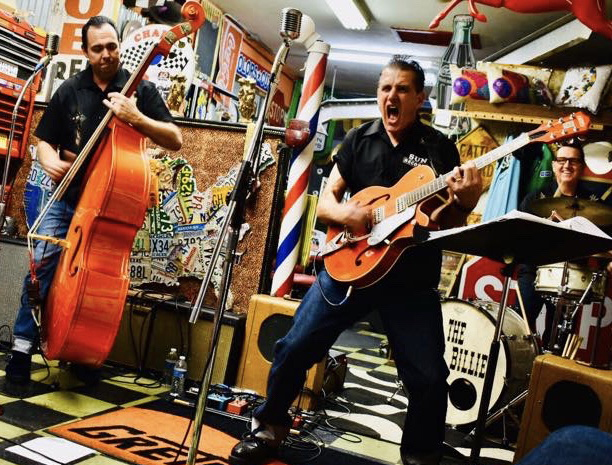
High-energy, good-time rockabilly from the Altar Billies. L to R: Johnny X, Mike Stand, Chuck Cummings.
Then, in 2008, Stand happened to get a suggestion from a bass-playing buddy that opened new musical doors and reignited his passion for songwriting.
“Yes, John (Hullings) really helped me connect the dots with rockabilly,” says Stand, “We were playing worship music together and he said to me, ‘Mike, you’ve always had a twang, and a little bit of country in your music. You should take some of your songs and ‘Billy them up.’ Then he went and made me a tape of all kinds of rockabilly artists, like, Eddie Cochran, Carl Perkins, and the early Sun Records stuff by Elvis and Johnny Cash. I hadn’t heard a lot of those songs before, and I just fell in love with them. The music was raw, powerful, and authentic. There’s just something about rockabilly and 50s music that just clicks and resonates deeply in me. I really believe all roads lead to rockabilly.”
Stand admits he has always been fascinated with the 1950s and its music (he saw American Graffiti 10 times when the movie was released in 1974), but describes it as “a very surface level, ‘Hound Dog’ kind of understanding” of rockabilly and early rock ‘n’ roll. But within a year, Stand was all in. He formed The Altar Billies with John Hullings (known as Johnny X) on upright bass and Chuck “Good Luck Chuck” Cummings on drums. The trio’s music has been labeled as rockabilly, punktry, gospelbilly, psychobilly, and country, just to name a few. The Altar Billies have released three albums (some that were mixed by Stand’s Grammy-winning producer son, Keith), and have a new album titled All In set for release later in 2021. The popular rockabilly trio also performs throughout Southern California. Stand says, “There are lots of neat places to play here, there’s really no reason for us to do extended touring. We could be playing every night if we wanted to.”
Stand is recognized as being one of the biggest students (and ambassadors) of the rockabilly genre, but probably his biggest personal accomplishment has been starting a rockabilly group with a handful of kids at Monte Vista Elementary School in Santa Ana.
“For 25 years my day gig has been teaching music in the Santa Ana Unified School District in California,” shares Stand. “A few years ago, our principal told me about a new music program called Little Kids Rock, so I checked it out, then I asked her if I could call our school’s program Little Kids Rockabilly. Lucky for me she said, ‘I don’t care what you call it, just get these kids playing music.’ I was fortunate to pick the right kids and with the support of the staff, teachers, principal, parents, the community, and Gretsch, who donated a bass as well as Gretsch t-shirts for the kids, The Wild Mustangs of Monte Vista, as they call themselves, performed their first show in the spring of 2019. And everyone was floored. They couldn’t believe these kids, with no backing tracks and blemishes and all, were playing “Blue Suede Shoes” and other rockabilly songs. We’ve probably got the only rockabilly band in a public elementary school California. I don’t know of any other school that is doing what we’re doing.”
We recently caught up with Mike Stand over the phone to talk about the Altar Billies, his unconventional musical career, what it’s like being both a student and a teacher of rockabilly, and, of course, his love of Gretsch guitars. Enjoy!
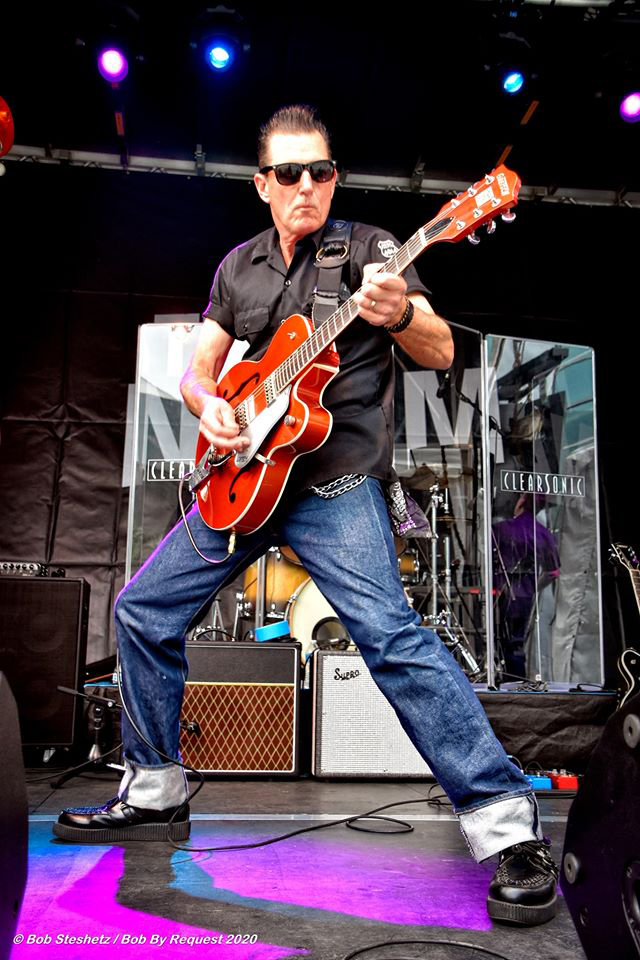
Mike and his Hot Rod. Photo by Bob Steshetz.
For starters, Mike, do you remember the first time that you saw a Gretsch guitar?
Oh, yeah. The first time I saw a Gretsch guitar was on George Harrison and Michael Nesmith. I kept looking at all the buttons on their guitars and wondering what they all did. The only time I recall seeing one locally was at a music shop in Anaheim one evening when I was going to the movies with some friends of mine. We walked by this music store and there in the storefront window was a Gretsch Country Gentleman. My buddies went on ahead to the movies while I stood there just focused on that Gretsch. We didn’t see too many people playing Gretsches in my town. I grew up in Fullerton, so most kids I knew played Fenders.
I heard you had your eye on your first Gretsch back in the 80s, but it got away. Tell us about that.
Well, around 1983 I had a Les Paul, but I was looking around for something different to play and a mutual friend had this orange Gretsch for sale. It was a 6120 from the 60s with Filter’Trons and painted-on f holes.
I took it on a test run for a few days, really liked it, and was going to buy it. Then a friend of mine from another band contacted me, knew I had the Gretsch, and asked to borrow it for a few days. So, I lent it to him believing I would get it back, but instead he bought it right out from underneath me. Can you believe that? It was the one that got away and it has kind of bothered me right up until this day. But I’m working through it.
So, when did you finally get your first Gretsch, the one that didn’t get away?
Back in 1996, and it is quite a story. A colleague of mine knew I had been playing guitar for a while and was telling me about her husband’s Gretsch White Falcon. Apparently, it had a broken headstock and he didn’t know where to get it repaired. I offered to connect him with a good luthier, but unfortunately, he got sick and passed away before we could get it fixed. She contacted me a few months after his passing and said, ‘Mike, I want to give you the White Falcon.’ It was so unexpected, and I really treasure that guitar and the memory of the man who owned it. I got the headstock repaired and used it extensively on my Full Circle solo project in 2001, on many Altar Billies’ recordings, and it’s featured on our “Head’n Out West” video. It rarely leaves my studio.
You own several more Gretsch guitars today. What’s in your current arsenal?
In addition to the White Falcon, I have a 6120 Chet Atkins, a 1999 Hot Rod, a Duo Jet, a Black Panther, and an archtop acoustic.
Do you have any personal favorites on the stage, in the studio, or at home?
Playing live, I switch between my Hot Rod and my 6120. And sometimes I’ll use my Black Panther. When I sit in with others, I usually play my Duo Jet. My White Falcon is only used for recording and my archtop is my go-to guitar at home. It sounds mighty fine with flat wounds on it.
What kind of reaction do you get from audiences when they see and hear your Gretsches?
I can’t tell you how many people come up after we’re done playing and say, ‘Wow, that is one good-looking Gretsch.’ The first thing I say is ‘Thank you.’ The second thing I say is ‘Do you play?’ And if they do, I say, ‘Here, go ahead and play it. Take it for a test run.’ It usually blows their minds, but I’m just a caretaker. I can’t take them with me. I feel like I’m caring for my Gretsches until the next person takes them and owns them, whoever that is. So, I just share. And I’ve had people get back to me saying how I let them play my guitar and they went out and bought their own Gretsch. I just love hearing that.
What’s it like playing in a trio and being the only guitar player?
That’s an interesting question. I always tease the fellas that if they miss a beat or Johnny drops a note on the bass, nothing happens. But if I go off the rails, everything falls apart. And how do you recover from that? I pretty much have to be on my game every time we play. I spend a good chunk of time practicing before each of our gigs. All of the solos in our songs are very specific and if I get lost, then we are in big trouble. Same with the lyrics. I really have to spend time reviewing lyrics before each gig.
How do you explain the songwriting resurgence you’ve had with the Altar Billies?
I can’t. I keep asking myself where do these songs come from? I’m just so fortunate. I mean, I still have to work at it. I work really hard at my craft. I’m constantly learning and studying. It’s a challenge to get better, because if you don’t use it, you’ll lose it. If you don’t progress, you regress. It’s a drive I’ve always had to improve myself, to outdo myself, because I always say you’re only as good as your last song or your last guitar solo.
Did you get any pushback when you made the switch over to rockabilly?
A few people gave me a little pushback on the rockabilly thing, like, ‘You can’t do that,’ but in my mind I was thinking that I don’t need to ask permission. This is where I’m going. I’m not doing this to make anybody upset, it’s just where I am. Most people my age don’t reinvent themselves. A lot of my buddies have, unfortunately, stopped playing. It happens; life gets in the way. But I found a genre of music that I love, and I think I’ve written my better songs in this genre and style. There’s just something about rockabilly that fascinates me.
What can you tell us about The Altar Billie’s upcoming All In album?
It is completely tracked and in the mixing process. I spent a good 500 hours writing, arranging solos, and recording it. The record can basically be divided up into three related genres: jazzbilly, hot rod, and traditional rockabilly and country. This project is not by any means a hodgepodge of styles. It is actually quite a cohesive work that we’re really proud of.
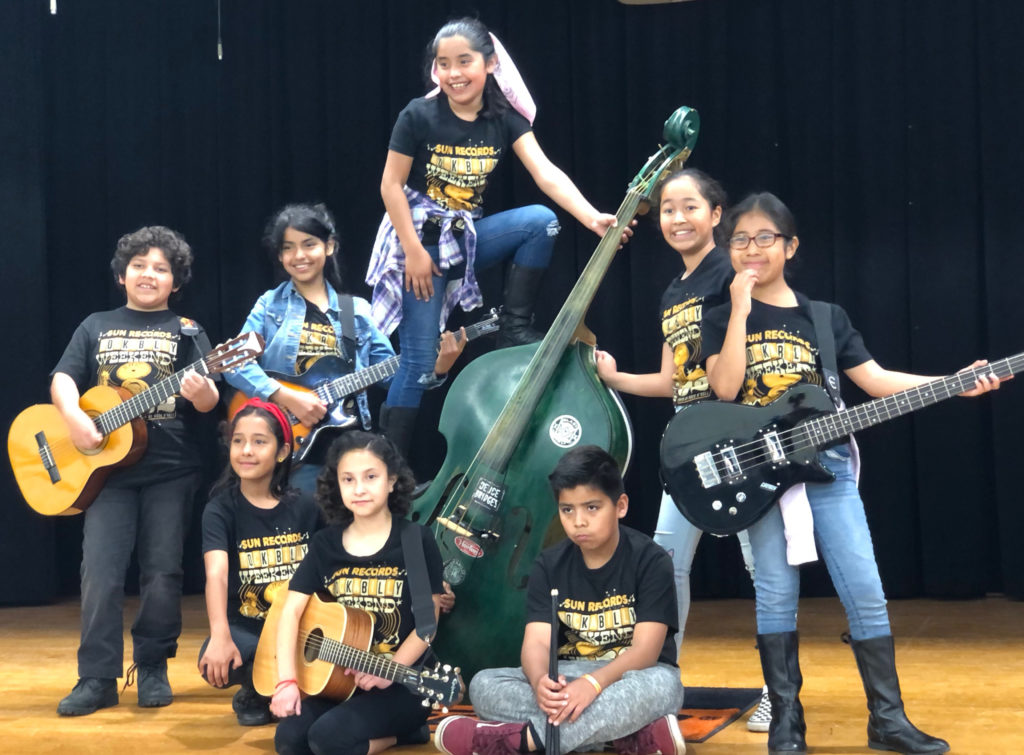
The Wild Mustangs of Monte Vista rockabilly band in 2019.
You’ve been a music teacher for 25 years. What is the most satisfying part of teaching music to young kids?
Seeing kids own what they learn. To see them practicing their instrument on their own when they didn’t have to. Pre Covid, they would come in the morning to practice, come in at lunch, and even after school. That means they’re owning their learning. And to me, there’s no greater reward than to see that. I can’t change the world completely, but I can do something in my little corner of the world that I’m responsible for. And you just do it, one child at a time.
How did Covid impact the Little Kids Rockabilly group you were teaching?
Covid decimated many of my music programs, but not the rockabilly group. I was bound and determined not to let these kids go. So, I committed to continue teaching them online until we got back to live instruction. I met with them virtually beginning in March 2020, even through the summer, up until the end of May 2021. It was not something I was assigned to do or had to do, much of my instruction was on my own time. But it was the right thing to do. In June 2021, the district finally reopened, and we met together for in-person instruction as part of a summer music program at Monte Vista. It was like a dream come true to see these kids play live together again, if even for a few weeks. Unfortunately, they are all moving on to intermediate school, so I will have to start all over and handpick new “rockabillies” for the Wild Mustangs this fall.
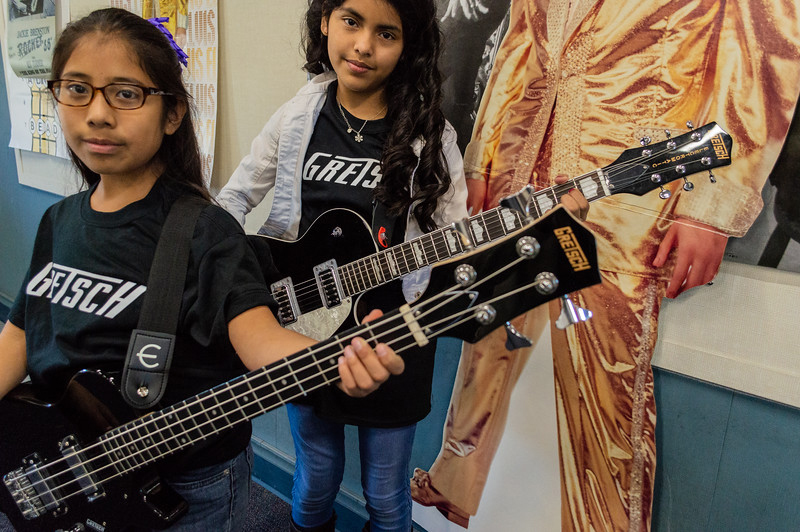
Two Gretsch guitar playing members of The Wild Mustangs of Monte Vista. Photo by Helen Christake.
What do these young musicians mean to you?
I can’t put into words what these kids mean to me. It’s so satisfying to pass the rockabilly torch and this music that I love so much on to the next generation. Rockabilly is such an important part of American music history; the kids not only learn about the music but also all the important names and facts associated with this genre. Hopefully, these kids will keep it going and remember that crazy music teacher they had who loved rockabilly and got so excited about Elvis, Eddie Cochran, and Sun Records.
Be sure to follow The Altar Billies on Facebook, Instagram, and YouTube.
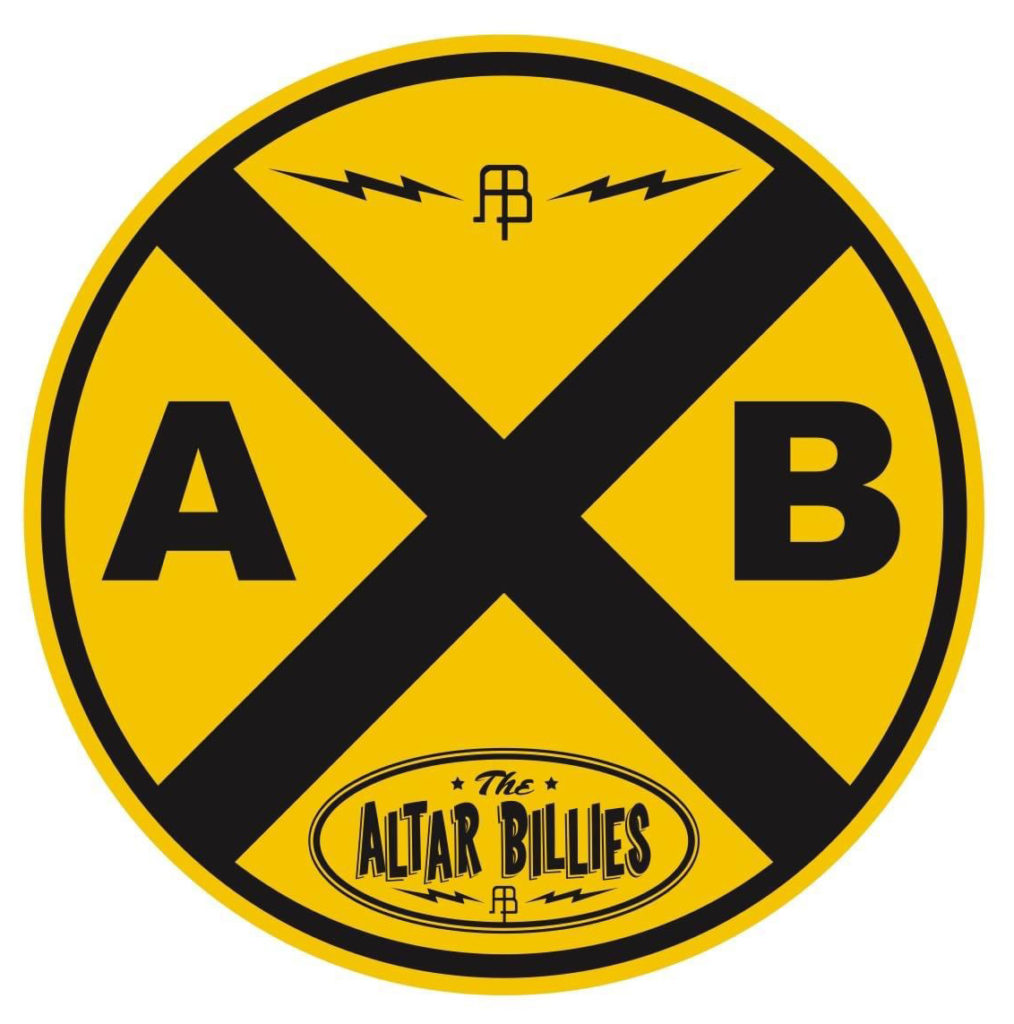
Stand’s lifelong love of trains is evident in his songwriting and even the band’s logo.
Enjoy these three Altar Billies videos selected by Mike Stand (who wrote each song and plays a different Gretsch in each video) that capture the raw energy and spirit of authentic 50s rockabilly:



 Previous
Previous